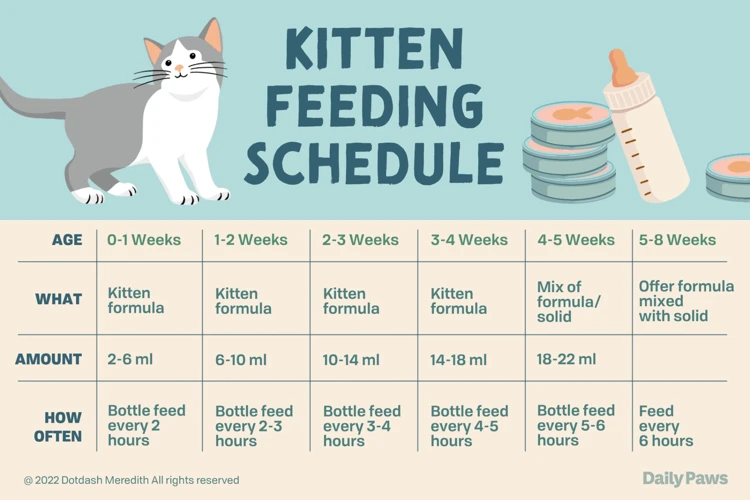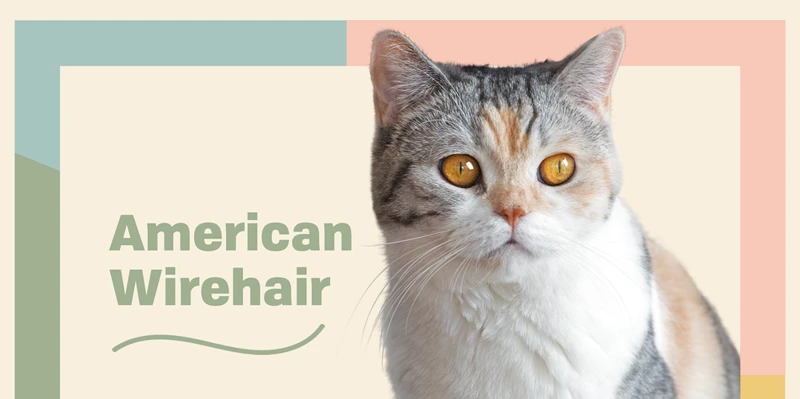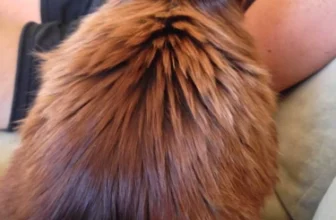Have you been having trouble sticking to a consistent feeding schedule for your American Wirehair cat? Maybe you’ve noticed that your cat’s eating habits are slightly off, or you’re thinking of making a change to their current routine. Whatever the reason may be, transitioning your cat to a new feeding schedule can be a daunting task. With so many things to consider, you may be unsure of where to start. Fear not, we’re here to help! In this article, we’ll discuss the reasons for changing your cat’s feeding schedule, the steps to take when making a transition, and how to monitor your cat’s progress. By the end of this article, you’ll have the confidence to implement a new feeding schedule for your furry friend.
Why Change Your Cat’s Feeding Schedule?

Understanding the reasons for changing your cat’s feeding schedule is essential for the overall health and well-being of your American Wirehair. When it comes to dietary changes, transitioning your furry friend should not be taken lightly but with care and attention. There are several reasons why you might need to switch your American Wirehair’s diet, such as ensuring they receive adequate nutrition at their various developmental stages or adjusting portion size after spaying. If done correctly, changing your cat’s feeding habits can address these and other issues and offer numerous benefits, including but not limited to enhancing their immune system and helping maintain healthy weight. Let’s explore some of the factors that you need to consider when changing your American Wirehair’s diet.
Identify the Problem
When identifying the problem with your American Wirehair’s feeding schedule, it’s important to consider any current issues that may be related to their current diet. One common problem is overeating, which can lead to obesity and related health issues. It’s essential to establish a feeding schedule that provides appropriate portion sizes and nutritional balance.
Another issue may be related to the type of food you are feeding your cat. American Wirehairs have specific nutritional needs depending on their age and developmental stage, so it’s important to choose the right food for your cat. For example, kittens will need higher amounts of protein and fat in their diets to support growth and development. You can find more information about this on am-wirehair-kitten-adult-feeding.
Feeding your cat on an inconsistent schedule can cause problems. This can lead to overeating when food is available and can also cause stress and anxiety for your cat. A consistent feeding schedule is recommended for American Wirehairs to promote better digestion and reduce the risk of obesity. You can read more about the benefits of a consistent feeding schedule on consistent-feeding-schedule-american-wirehair.
Lastly, it’s important to consider the benefits of a balanced and varied diet. Feeding your cat a mix of wet and dry food can provide important nutrients and help maintain a healthy weight. You can find more information about the benefits of a varied diet on benefits-wirehair-diet. However, when introducing new types of food into your cat’s diet, it should be done gradually to avoid upsetting their digestive system.
By identifying the problem with your cat’s feeding schedule, you can better address any issues and establish a new feeding plan with confidence. Don’t forget to also consider portion sizes, timing and nutritional balance. You can learn more about portion control for American Wirehairs on portion-size-american-wirehair and about their overall nutrition on american-wirehair-nutrition.
Consider Your Cat’s Developmental Stage
When considering changing your American Wirehair’s feeding schedule, it’s crucial to take into consideration their developmental stage. Whether your cat is a kitten, adult, or senior, it can greatly impact the way they respond to changes in their diet. Kittens, for example, require more frequent feedings due to their smaller stomach and higher energy needs. It’s recommended that kittens are fed 3-4 times a day until they are around 4 months old. Adult cats, on the other hand, do well with two smaller meals per day. They should not be free-fed, as they are prone to obesity. Lastly, senior cats may require more frequent but smaller meals, as they have smaller stomachs and a decrease in their sense of smell and taste.
It is also important to note that some cats may have unique needs due to health issues or special diets. In these cases, it’s best to consult with your veterinarian before making any changes to their feeding schedule. Considering your cat’s developmental stage is crucial in ensuring a smooth transition to their new feeding schedule, and can prevent any potential health issues from arising.
It’s also worth noting that there are benefits and drawbacks to free feeding your American Wirehair, which you can read more about in our article on the pros and cons of free feeding. However, regardless of whether you choose to free-feed or feed at specific times, it’s important to ensure they are receiving the proper portions and nutrients they need for optimal health.
How to Change Your Cat’s Feeding Schedule?

Changing your cat’s feeding schedule is not something that can be done abruptly. It requires patience, planning, and monitoring. Your American Wirehair may take some time to adjust to a new feeding routine, and it’s important to make the transition as smooth as possible. In this section, we’ll take a closer look at the steps involved in changing your cat’s feeding schedule. From transitioning slowly to portion control, these tips will help make the process easier for you and your feline friend.
Transition Slowly
Transitioning your American Wirehair to a new feeding schedule is a gradual process that requires patience and consistency. But why should you transition slowly instead of just changing your cat’s feeding schedule all at once? The answer lies in your cat’s digestive system. Cats are creatures of habit, and sudden changes in their diet can cause digestive issues such as vomiting, diarrhea, and loss of appetite. That’s why it’s important to transition your cat’s feeding schedule slowly and gradually. Here are some steps to follow:
| Step | Action |
|---|---|
| Step 1 | Start by mixing a small amount of the new food with your cat’s current food, gradually increasing the amount of new food over a period of 7-10 days. For example, if you’re transitioning from feeding your cat dry kibble to wet food, start by adding a small amount of wet food to the dry kibble, slowly increasing the amount of wet food each day. |
| Step 2 | Observe your cat’s reaction to the new food during the transition period. If your cat experiences any signs of digestive upset, such as vomiting or diarrhea, slow down the transition process and give your cat’s digestive system time to adjust. |
| Step 3 | Once your cat has successfully transitioned to the new feeding schedule, slowly decrease the amount of the old food and increase the amount of the new food over the course of another 7-10 days. This gradual decrease in the old food helps your cat’s digestive system adjust to the new food without causing any digestive upset. |
| Step 4 | After your cat has fully transitioned to the new feeding schedule, maintain the new feeding schedule consistently. Cats thrive on routine, so it’s important to stick to a consistent feeding schedule to help your cat maintain a healthy weight and avoid digestive issues. |
Following these steps will help ensure a smooth transition for your American Wirehair’s feeding schedule while also promoting a healthy digestive system. Remember, patience and consistency are key when it comes to transitioning your cat to a new feeding schedule.
Portion Control is Essential
When transitioning your American Wirehair cat to a new feeding schedule, portion control is essential. This means that you need to make sure you are feeding your cat the right amount of food to maintain a healthy weight.
It’s important to note that portion sizes for cats can vary depending on their age, weight, and activity level. Consult with your veterinarian to determine how much food your cat should be eating.
One way to control portions is by using a measuring cup for both dry and wet food. This will ensure that you are feeding the appropriate amount of food each time.
Another helpful tool is an automatic feeder, which will dispense a predetermined amount of food at a set time. This takes the guesswork out of portion size and ensures that your cat is fed consistently.
To give you an idea of how much to feed your cat, here is a general guideline based on their weight:
| Weight of Cat | Amount of Dry Food per Day | Amount of Wet Food per Day |
|---|---|---|
| 5 lbs | 1/4 to 1/2 cup | 2.5 to 4 oz |
| 10 lbs | 1/2 to 2/3 cup | 4 to 6 oz |
| 15 lbs | 2/3 to 3/4 cup | 6 to 8 oz |
| 20 lbs | 3/4 to 1 cup | 8 to 10 oz |
Remember, these are just general guidelines, and your cat’s individual needs may vary. Always consult with your veterinarian before making any changes to your cat’s diet. With proper portion control and monitoring, you can ensure that your American Wirehair cat is healthy and happy on their new feeding schedule.
Incorporate Wet Food little by little
When transitioning your American Wirehair to a new feeding schedule, it’s important to consider incorporating wet food into their diet. However, it’s essential to do this gradually to avoid upsetting their stomachs or causing digestive issues. Here are some tips for incorporating wet food little by little:
- Start with a small amount: Begin by mixing a teaspoon of wet food into their regular dry food. Gradually increase the amount of wet food over the course of several days until the cat is eating solely wet food.
- Choose high-quality wet food: Look for wet cat foods that are high in protein, low in carbohydrates, and free from fillers and artificial additives.
- Monitor the cat’s reaction: Keep an eye on your cat’s reaction after incorporating wet food into their diet. If they experience any digestive issues, like diarrhea or vomiting, adjust the amount of wet food you’re giving them or slow down the transition process.
- Consider the cat’s age and health: For older cats or those with health issues, consult with your veterinarian before adding wet food to their diet. They may recommend a specific type or brand of wet food that is better suited to your cat’s needs.
- Keep fresh water available: Wet food contains more moisture than dry food, so it’s important to ensure your cat has access to fresh water at all times to prevent dehydration.
By incorporating wet food into your American Wirehair’s diet little by little, you can provide them with valuable nutrients and additional hydration without causing any digestive issues. Plus, your cat may enjoy the variety and texture of wet food as a treat or special meal.
Timing Matters
When it comes to transitioning your American Wirehair to a new feeding schedule, timing is a crucial factor to consider. The following are some tips to keep in mind:
- Stick to a routine: Cats are creatures of habit, and changing their feeding schedule abruptly can upset them. Gradually introduce your new feeding schedule at the same time each day, starting with just one meal at the designated time. Once your cat becomes accustomed to the schedule, add another meal and so on until you reach the desired feeding schedule.
- Avoid feeding close to bedtime: Cats are typically more active at night, so feeding them immediately before bed can lead to an upset stomach or even behaviors like a restless night or meowing for more food.
- Consider your cat’s energy needs: Keep in mind your cat’s energy level when planning the feeding schedule. Cats that are highly active require more food than less active cats. Additionally, if you’re transitioning from free-feeding to scheduled feeding, adjust the portion sizes accordingly.
- Time meals after play: Exercising your cat before a meal can help stimulate their appetite and ensure that they eat a sufficient amount of food. Engage your cat in playtime for a few minutes before each scheduled meal.
By considering these tips, you can ensure that your American Wirehair transitions smoothly to their new feeding schedule. Remember to be patient and observe their behavior closely during the transition period.
Is Your Cat’s New Feeding Schedule Working?
As a responsible pet owner, you want to make sure that your beloved American Wirehair is thriving on their new feeding schedule. But how do you know if the new schedule is working? It can be a perplexing question, but don’t worry – we’re here to help. In this section, we’ll discuss some key indicators to look out for to determine if the changes in your cat’s mealtime routine are having the desired effect. With some patience and observation, you can rest assured that your cat is well-fed and content.
Monitor your cat’s weight
It’s essential to monitor your cat’s weight during the transition period and after the new feeding schedule has been established. Obesity is a common problem in cats, and sudden changes in feeding habits can lead to weight gain or loss. A healthy weight for an American Wirehair cat is between 8-15 pounds.
To make sure your cat is maintaining a healthy weight, it’s a good idea to keep a record of their weight. You can track their weight in a journal, on a spreadsheet, or in a mobile app. Weigh your cat regularly, at least once a week, at the same time every day, so you can accurately monitor their progress.
Here’s an example table you can use to track your cat’s weight during the transition period and after:
| Date | Weight (lbs) | Notes |
|---|---|---|
| Day 1 | 9.5 | Starting weight |
| Day 7 | 9.6 | Increase portion size slightly |
| Day 14 | 9.8 | Switch to new food completely, decrease portion size |
| Day 21 | 9.7 | Increase portion size slightly |
| Day 28 | 9.6 | Monitor weight for another week before making adjustments |
It’s important not to panic if you see slight fluctuations in weight during the transition period. Cats may gain or lose a little weight during changes in their diet, but if you notice a significant change, it’s best to consult your veterinarian. Remember to use portion control, gradually incorporate wet food, and be mindful of timing when feeding your cat to maintain a healthy weight.
Check your cat’s stool
One crucial indicator of your American Wirehair’s health when transitioning to a new feeding schedule is checking their stool. This may not be the most enjoyable task, but it provides significant insights into your cat’s digestive health. There are several key aspects to look out for when checking your cat’s stool.
Consistency: Your cat’s stool should be well-formed and easy to scoop. Check if it is too runny or too hard, as this may indicate that it is time to adjust their feeding schedule once again.
Color: The color of your cat’s stool should be a consistent brown shade. If you notice any black specks or a tarry consistency, it may be an indication of bleeding in the stomach or intestines. Additionally, red coloring may suggest bleeding in the lower intestinal tract.
Smell: While it may not be a pleasant experience, the odor of your cat’s stool can provide valuable insights into their digestive wellness. While it may not be a pleasant smell, it should not be overpowering or have a particularly unusual smell.
Frequency: Find out the normal frequency of your cat’s bowel movements. If the frequency is drastically altered due to a change in the feeding schedule, it may indicate a need to adjust your cat’s diet to help regulate their digestive system.
When checking your cat’s stool, it is important to look out for any abnormalities and promptly address them. If you do discover any concerning signs, it is essential to consult your veterinarian.
| Aspect | What to Look For |
|---|---|
| Consistency | Your cat’s stool should be well-formed and easy to scoop. Check if it is too runny or too hard, as this may indicate that it is time to adjust their feeding schedule once again. |
| Color | The color of your cat’s stool should be a consistent brown shade. If you notice any black specks or a tarry consistency, it may be an indication of bleeding in the stomach or intestines. Additionally, red coloring may suggest bleeding in the lower intestinal tract. |
| Smell | While it may not be a pleasant smell, the odor of your cat’s stool can provide valuable insights into their digestive wellness. While it may not be a pleasant smell, it should not be overpowering or have a particularly unusual smell. |
| Frequency | Find out the normal frequency of your cat’s bowel movements. If the frequency is drastically altered due to a change in the feeding schedule, it may indicate a need to adjust your cat’s diet to help regulate their digestive system. |
Monitor the Cat’s Behavior
When transitioning your American Wirehair to a new feeding schedule, it is important to monitor their behavior. The sudden change in diet can cause anxiety or disorientation in some cats. Keeping an eye on their behavior can help you identify any issues that may arise.
What behavior to monitor?
As you transition your cat to a new feeding schedule, monitor their behavior for any changes in the following areas:
| Behavior | What to look for |
|---|---|
| Appetite | Keep track of your cat’s enthusiasm for their new feeding schedule. Are they eating their food regularly or showing a decreased appetite? |
| Energy level | Any change in energy levels can be a sign of your cat adjusting to their new eating schedule. Observe if they have become more lethargic or hyperactive. |
| Mood | Changes in your cat’s mood can be a sign of anxiety or discomfort. Look for any signs of agitation, nervousness, or irritability. |
| Scratching | Your cat may start scratching more than usual if they are not feeling comfortable with the new feeding schedule. Keep an eye on their scratching behavior. |
| Vomiting | If your cat is throwing up after meals, the new feeding schedule may not be agreeing with their stomach. Monitor their vomiting behavior and adjust their feeding schedule accordingly. |
Why is monitoring behavior important?
Cats are creatures of habit, and sudden changes can cause stress and anxiety. Monitoring their behavior allows you to identify any issues that may arise during the transition and address them as early as possible. If your cat is not adjusting well to their new feeding schedule, you can take steps to make changes that will help them feel more comfortable.
Monitoring your American Wirehair’s behavior during the transition to a new feeding schedule is essential. By observing their appetite, energy levels, mood, scratching behavior, and vomiting behavior, you can ensure their adjustment to the new schedule is successful. Remember that each cat is unique, and their response to change may be different. Be patient and attentive to your pet’s needs throughout the process.
Conclusion
In conclusion, transitioning your American Wirehair to a new feeding schedule can be a daunting task, but it’s necessary to ensure your cat’s overall health and well-being. As a responsible pet owner, you should monitor your cat’s weight, stool, and behavior to ensure that the new feeding schedule is working.
Remember to identify the problem you’re trying to solve, consider your cat’s developmental stage, transition slowly, portion control, incorporate wet food, and time your feedings correctly. These steps will help you make the transition smoothly and avoid any digestive or health problems that your cat may face.
If you’re unsure about changing your cat’s feeding schedule, consult your veterinarian, who can provide additional guidance and advice tailored specifically to your cat’s needs.
Your cat’s nutrition is a vital aspect of its overall health, and finding the right feeding schedule can have a significant impact on its quality of life. By following these tips and being patient, you’ll be able to create a balanced, healthy feeding schedule that works for you and your American Wirehair.
Frequently Asked Questions
1. Can I suddenly change my American Wirehair’s feeding schedule?
No, sudden changes in feeding schedules can lead to digestive problems and stress in your cat. It is essential to transition slowly.
2. Should I include wet food in my cat’s feeding schedule?
Yes, incorporating wet food adds moisture to your cat’s diet, promoting overall digestive health. But do it gradually to avoid stomach problems.
3. How much should I feed my cat during the transition period?
Portion control is critical when transitioning to a new feeding schedule. Stick to the recommended amount of food for your cat’s weight and age.
4. What time of the day is best to change my cat’s feeding schedule?
Choose a time when you can monitor your cat’s response to the new feeding schedule. Making changes over the weekend when you are at home is a good option.
5. My cat is overweight, can I reduce the food amount during the transition period?
No, reducing the food amount too quickly and without proper planning can lead to malnutrition. Consult your vet to establish the right portion size and feeding schedule.
6. How do I know if the new feeding schedule is bad for my cat?
Monitor your cat’s weight, stools, and behavior. Any significant changes should prompt you to consult your vet.
7. What is the right way to transition from a dry food to a wet food diet?
Gradually introduce wet food into your cat’s diet. Mix increasing amounts of wet food with decreasing amounts of dry food over the transition period.
8. Can I mix different kinds of food during the transition period?
No, mixing different kinds of food during the transition period can cause gastric distress. Choose one brand and flavor of food to maintain consistency.
9. My cat is not drinking enough water, what can I do?
Adding more moisture to your cat’s diet, either through wet food or a cat water fountain, can help promote your cat’s interest in water.
10. Should I change the feeding schedule of my aging American Wirehair?
Yes, as cats age, their metabolism and nutritional needs change. Consult with your vet to establish the best feeding schedule for your aging American Wirehair.







